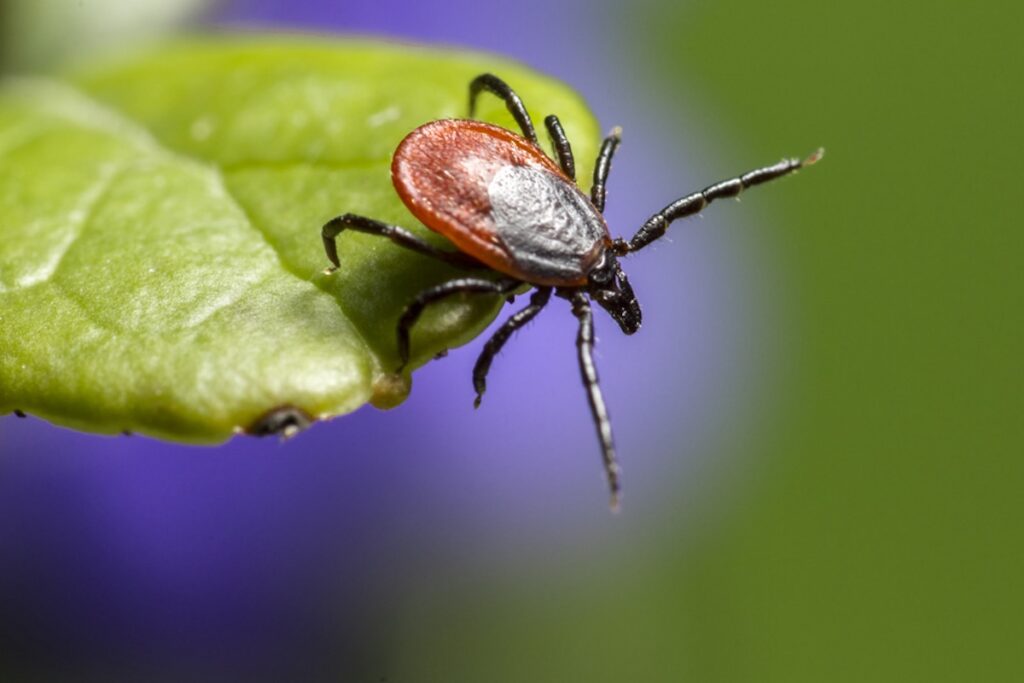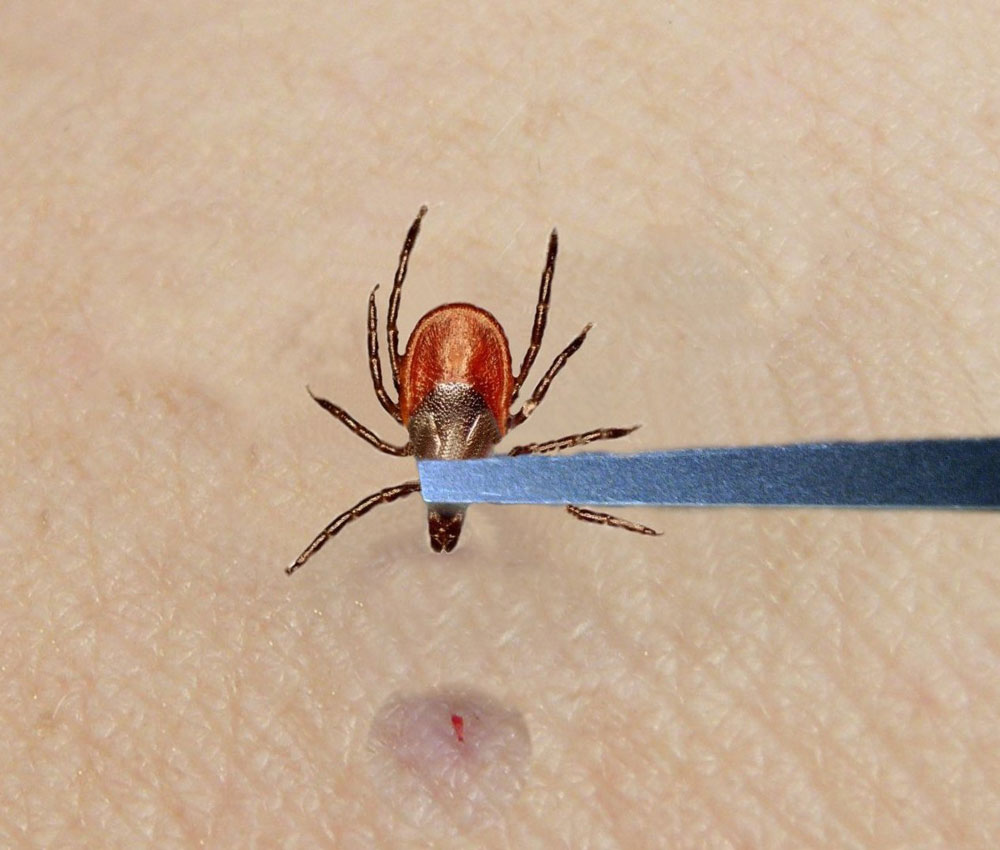Long Island doctor stresses importance of checking for ticks

Spending time outdoors this summer? Make sure you’re checking yourself and your pets for ticks. The Centers for Disease Control and Prevention has reported an uptick in emergency department visits attributed to the parasites this year.
Tick bites accounted for roughly 160 emergency department visits of every 100,000 visits in the Northeast so far in July 2025, according to the CDC’s Tick Bite Data Tracker. The number is nearly twice as many tick bites that accounted for regional emergency department visits in July 2024.
Across Long Island, the state health department has reported there is a high risk of encountering an infected blacklegged deer tick. Ticks can be infected with any of the pathogens causing Lyme disease, anaplasmosis, babesiosis, hard tick relapsing fever or Powassan encephalitis.
“It’s a good idea to prevent these diseases, otherwise some of them do have long-term consequences,” Dr. Sandeep Gandhi, an infectious disease physician at Stony Brook Southampton Hospital’s Hampton Bays Tick Clinic, said. The clinic, also known as the Regional Tick-Borne Disease Resource Center, offers specialized care for adults and children concerned about tick bites, Lyme disease and other tick-borne infections.
While the center’s hotline typically gets hundreds of calls a season, Dr. Gandhi said he has seen a notable uptick in reported tick bites and tick-related infections this year.
“This year we are seeing much more — it’s an exponential growth from previous years,” he said. “We believe that this is from global warming but also that Long Island is the capital of Lyme disease for the whole world.”
People are also outdoors hiking more, traveling more and have even adopted dogs in recent years, which Dr. Gandhi said can contribute to the risk factor for tick bites.
Preventative measures for tick bites include avoiding tall grass and dense vegetation, regularly mowing your lawn and removing leaf litter. Dr. Gandi said one of the most common ways ticks get onto people is when their animal sleeps in bed with them.
Other prevention methods include tucking your pants into your socks, using tick repellent like DEET and spraying permethrin on clothes.
Lyme disease is the most common tick disease in our area, Dr. Gandhi said. It takes roughly 36 to 48 hours for the disease to be transmitted from the tick to the body, so it is paramount that ticks be removed as soon as possible.


“The traditional manifestation [of Lyme disease] is the bullseye rash,” Dr. Gandhi said. “However, what we have found is that’s not the most common. What we have found [is] it appears more like a bruise or a redness in a circular fashion. Lately, we have also been seeing they are not in a circular fashion but a diffused redness.”
The Hampton Bays clinic provides access to human tick removal, diagnosis, treatment, lab services, blood drawing, counseling on tick bite prevention and tick identification. Visitors can also grab free tick removal kits and tick-borne disease reference handbooks at the center.
Patients can also participate in ongoing research studies that contribute to broader understanding and development of effective treatments for tick-borne diseases at the Hampton Bays clinic.
To make an appointment at the clinic, call 631-725-2112 for adult treatment or 631-444-5437 for child treatment. The center’s help line is reachable at 631-726-8425.
For pets, owners can do daily tick checks — focusing on their ears, neck, armpits, under their collar, around their tail and between their toes. Consult your veterinarian for information about vaccination or other preventives.
If your pet is presenting with a loss of appetite, lethargy, limping, joint pain, fever or swelling, contact a veterinarian. “Many people don’t realize that ticks are active from spring through late fall, and this summer we’re already seeing an unusual uptick,” Becca Boronat, national shelter medicine veterinarian with Best Friends Animal Society said in a press release. “Just one bite can have serious consequences if not addressed quickly.”









